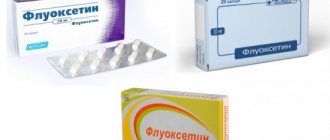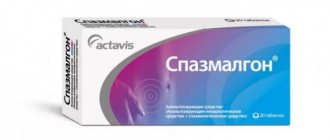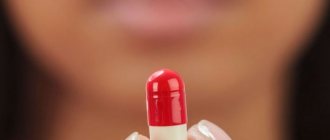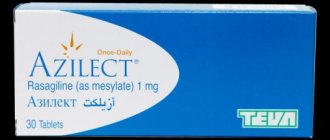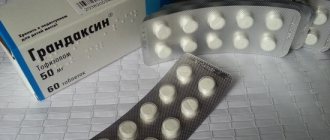Very often the term “barbiturates” is applied to all existing sedative medications. In fact, it is relevant only for a certain group of funds. The list of barbiturate drugs is quite long. Despite the fact that medications in this group have many contraindications and side effects, sometimes it is almost impossible to do without their help.
Mechanism of action of barbiturates
Barbiturates are made from barbituric acid. They were invented at the beginning of the last century. Today, out of more than two thousand known drugs, no more than a dozen can be found on sale. This is explained by the too severe effect of the medications.
Barbiturates have a powerful sedative, analgesic and hypnotic effect. Surely many people associate drugs from the barbiturate group with drugs – quite rightly so. The fact is that medications depress the nervous system, and using them too often can lead to addiction.
The effect of barbiturates can be easily compared with the body’s reaction to alcohol: first comes a period of euphoria and excitement (depending on the physique and state of health of the person, this stage can last from several minutes to two to three hours), after which there is a heavy sleep, after which one remains depressed and depressed. broken state.
The pharmacokinetics of almost all barbiturates are the same. The active ingredients of the drugs are very quickly and almost completely absorbed from the gastrointestinal tract. In other organs, adsorption practically does not occur. Barbiturates are primarily eliminated from the body by the kidneys, but when taking certain types of drugs, the main burden falls on the liver.
Medicines differ in their duration of action. Suitable ones are selected depending on the problem. So, for example, a short-acting (up to six hours) drug will help one patient calm down, while another will be able to feel the effect only from the strongest medication.
Most drugs on the list of barbiturates are prescribed in the following cases:
- with convulsions and seizures;
- to combat stress;
- for nervous disorders;
- in preparation for anesthesia;
- for insomnia.
Pre-administration of barbiturates enhances the effect of local anesthesia and painkillers. You can take the drugs either in the form of tablets or powders, or intravenously or intramuscularly. Some of the drugs can be administered rectally. But most often barbiturates are introduced into the body intravenously.
Barbiturates - what are they?
No matter how surprising it may seem, the names of most drugs recognized as barbiturates are well-known today. Most likely, you have heard about medications such as:
- Phenobarbital;
- Barbital;
- Hexobarbital;
- Butizol;
- Alurat and others.
Most of the drugs on this list are long-acting barbiturates. They begin to act in the body within a quarter of an hour (and sometimes even less) after administration.
The list of the most popular barbiturate drugs also includes the following drugs:
- Etaminal sodium;
- Cyclobarbital;
- Talbutal;
- Metarbital;
- Repozal;
- Barbamil;
- Methylphenobarbital;
- Sodium thiopental;
- Fiorinal;
- Nembutal;
- Lotusate;
- Allobarbital and others.
In medical practice, barbiturates are often used such as:
It is impossible to buy all of the above drugs without a prescription in officially registered pharmacies. If necessary, they can be obtained in very limited quantities from your doctor.
For more than a hundred years, drugs such as barbiturates have been known in medicine. The list of drugs containing these substances has been greatly reduced recently, because it turned out that they can cause severe dependence and severe side effects. But, despite this, such drugs are still used in medicine, although they cannot be found on the open market. This is explained by the fact that in the middle of the 20th century there were a lot of deaths due to barbiturate poisoning. Therefore, those to whom a doctor prescribes these drugs for treatment need to know what side effects they can cause. In addition, there are modern, more effective and safer medications.
General information
Barbiturates are a group of powerful sedatives that depress the central nervous system. All drugs from this group are used as drugs for premedication, anesthesia or sedation for anxiety.
In medical practice, they use such a diagnosis as barbituromania. This is a condition in which a person develops physical and psychological dependence on drugs from the barbiturate group. The constant uncontrolled use of barbituric acid derivatives for the purpose of drug intoxication has led to restrictions on their sales. A replacement for barbiturates was quickly found. Instead, weaker drugs from the group of benzodiazepines are prescribed for medical purposes.
In 2020, up to 10 drugs from the barbiturate group are used. Basically, these are drugs for anesthesia that are sold by prescription. But substances such as Corvalol, with a small concentration of barbiturate, can still be bought without a prescription.
The problem with barbiturate addiction is that people often die from an overdose. Even with short-term use, memory is depressed, the ability to learn and concentrate is impaired, and irreversible changes occur in the cerebral cortex.
Basically, barbiturates are prescribed as sleeping pills 20-50 minutes before bedtime. But due to the large number of side effects, doctors began to prescribe benzodiazepine receptor antagonists.
Taken from: Pharmacology, tenth edition by D.A. Kharkevich
The main mechanism of action of barbiturates is the inhibition of spinal synaptic reflexes and the regulation of higher neuronal centers of the hypothalamus. As a result, a person loses the ability to control his emotions and coordinate his movements. High doses lead to loss of consciousness, coma and death.
How are barbiturates used?
It has long been proven that these drugs cause severe drug addiction, often resulting in death. But in some cases, only barbiturates can help the patient. The list of drugs currently used in medicine has been greatly reduced, but they can only be purchased with a doctor’s prescription.
– under severe stress;
– serious nervous disorders;
– for seizures and convulsions;
– to prepare the patient for anesthesia during operations;
– in case of insomnia, when other remedies do not help.
Barbiturates are mainly used for epilepsy. But some older, lonely people also use them to calm themselves down. In medical settings, barbiturates are used as intravenous or intramuscular injections, and for outpatient treatment, tablets, capsules, or suppositories may be prescribed. Some drugs are found in other medications. For example, phenobarbital is the basis of Corvalol. And the strong sleeping pill Penobarbital is used for executions or euthanasia in veterinary medicine.
Historical facts
The German scientist Adolf Bayer is considered the discoverer of barbituric acid. It was not until 1903 that barbituric acid derivatives began to be marketed as remedies for insomnia and stress.
The first drug to hit the market was Veronal. From 1903 to 1930, the first facts of abuse of barbituric acid derivatives were already recorded. But the lack of an alternative led to the continued use of barbiturates until the 1960s.
After studies and evidence of dependence on barbituric acid derivatives were published, these drugs were abandoned. Now barbiturates are considered illegal drugs, after taking which you cannot drive a car, do work that requires quick reactions and on which the lives of other people depend.
What can replace barbiturates?
Recently, such drugs are used less and less. In many countries, barbiturates are generally prohibited. Not everyone knows what medications they are used in, so you need to carefully read the ingredients in the instructions. And to get rid of insomnia and stress, safer drugs are now used, which very rarely cause addiction. Most often these are Lorazepam, Diazepam, Librium and others. Even safer are Novo Passit, Glycine, Zelenin Drops and other homeopathic medicines. An alternative to chemical remedies may be herbal infusions of mint or motherwort, aromatherapy, acupuncture, or lifestyle changes.
When undergoing regular medical examinations, people calmly submit to urine tests for drugs. They absolutely know that they did not use prohibited substances. However, in some cases, such a test analysis shows the presence of barbiturates in the urine. What is this? Lab error? Or the sudden discovery of a hidden drug addiction?
At first glance, everything is obvious and one of the options is correct. However, not all so simple. Let's try to figure out why there is a third option, which people are practically unaware of. This is taking drugs that are widely used among the population, but contain barbiturates.
Barbiturates became known a little over a hundred years ago. The drugs were quite widely known due to their wide range of applications. They were prescribed for insomnia, against seizures, as a sedative, and used for anesthesia.
Over time, it became clear that barbiturates cause persistent addiction, comparable to alcohol and drug addiction. In addition, the slightest overdose of the drug leads to poisoning. Due to toxicity and increased addictive potential, Phenobarbital and other barbituric acid derivatives are classified as narcotic drugs.
Abroad, not only phenobarbital and barbiturates are prohibited, but also any drugs that may contain them. In countries such as America, Lithuania or the United Arab Emirates, the import of medicines containing barbituric acid derivatives is prohibited.
Derivatives of barbituric acid are used in medicine today. They are included in various medications:
- Anticonvulsants.
- Heartfelt.
- Sleeping pills.
- Antiepileptics.
- Analgesics (painkillers).
- Antiarrhythmic.
- Hypotensive (lowering blood pressure).
In addition to drugs whose names clearly indicate the presence of barbiturates (Phenobarbital, Luminal, Barbital), there is a wide group of drugs containing, in one dose or another, derivatives of barbituric acid.
Effect on the body
Preparations based on barbituric acid are involved in the transformations of GABA (gamma-aminobutyric acid). They slow down the effect of the GABA neurotransmitter on synaptic membranes and, thereby, lead to partial depression of the nervous system. In turn, this activates the vagus nerve. The following reactions occur in the body under the influence of barbiturates:
- slower reaction;
- impaired coordination of movements;
- decreased heart rate;
- spasm of small and large caliber bronchi;
- acceleration of intestinal motility;
- increased salivation;
- slowing down of excitation processes in the nervous system and the appearance of drowsiness or sleep;
- memory impairment;
- decreased metabolic capacity of the liver;
- decreased intellectual abilities;
- drop in blood pressure;
- loss of the ability to control emotions.
All effects depend on dosage. Even a slight increase in the dose of the drug leads to potentiation of the effect. In pharmaceutical doses during short courses, the drug has no side effects and does not cause physical dependence.
Long-term use of even pharmaceutical doses leads to accumulation of the drug. The REM sleep phase is disrupted. Side effects after 2-4 regular doses may persist for up to 2 weeks. If a single dose exceeds the pharmaceutical dose, the following symptoms will be observed after the medication wears off:
- lethargy;
- dry mouth;
- anxiety;
- muscle twitching;
- convulsions.
If physical dependence develops (after 2 months of regular use of drugs based on barbituric acid), sudden refusal of drugs leads to mental disorders. Refusal provokes the development of psychosis, paranoid delusions, vomiting, convulsions, loss of consciousness and even death.
Over 4-6 months of regular use, the drug can lead to irreversible changes in the cerebral cortex. With physical dependence, a person practically cannot stop taking the drug immediately and without outside help.
When prescribing drugs from barbituric acid derivatives in pharmacological doses, no changes in internal organs are observed, except for allergic reactions (skin rashes, urticaria).
Taken from: Pharmacology, tenth edition by D.A. Kharkevich
The effect of the drug in small doses is similar to the effects of drinking alcohol. But if you combine barbiturates and alcohol, both substances will enhance the effect of each other. This can lead to respiratory arrest, coma, psychosis or death.
What side effects cause
Nowadays, barbiturates are mainly used in medical institutions. The list of drugs approved for use is known only to specialists. It is very easy to become poisoned by such drugs or become dependent on them. If a person frequently uses barbiturates, this can be recognized by the following signs:
- drowsiness, confusion, frequent hallucinations;
- imbalance and uncontrolled movements;
- slurred speech, stuttering;
- rash and purulent skin diseases;
- metabolic disorders and slowing down the action of the gastrointestinal system;
- depression, absent-mindedness, but sometimes aggressiveness;
- lethargy and impaired concentration.
How to recognize a drug addict
When abusing barbiturates, a person can be in two states: the state of drug action or intoxication, and the state of withdrawal. In the first case there will be the following symptoms:
- lethargy and slow reaction;
- impaired coordination of movements;
- difficulty concentrating;
- disorientation in space and time.
A person under the influence of barbiturates usually wants to be left alone. The drug's action phase ends with deep sleep.
The state of intoxication resembles alcohol intoxication, but unlike the latter, when intoxicated with barbiturates, there is no smell of ethanol from the patient’s mouth.
In a state of withdrawal, a person may experience psychosis, paranoia, and anxiety. The desire to use in order to eliminate all symptoms prevails over other vital needs in the form of food, communication, personal care (hygiene, clean clothes, favorable living environment).
In a state of withdrawal, a person is able to deceive family and friends. He may steal money or valuables from the house. If there is a suspicion that a person is abusing drugs based on barbituric acid, it is necessary to test the patient.
Emergency life saving
If one of your family or friends is taking a dangerous drug, you need to monitor how much the person has taken. It is especially important to control the dosage in older people who are prone to forgetfulness. It would be useful to learn the symptoms that indicate that you have taken a lot of the drug.
In any case, you cannot do without calling an emergency team. It is important to remember the name of the medications and not throw away the containers of the medications so that doctors can begin detoxification as quickly as possible and minimize the strong negative effect of poisoning.
While the ambulance is on its way, you should take a number of independent measures. In particular, if a person started using sleeping pills 30 minutes ago and is still conscious, you need to:
- give as much water as possible to drink;
- induce vomiting;
- give sorbents (activated carbon);
- pour sweet strong tea or milk.
If a person is unconscious, the algorithm of actions is:
- open your mouth and check for tablets - a large amount cannot be swallowed at once;
- if there are signs of breathing or heartbeat, place the patient on his side;
- vomiting began, you need to make sure that the respiratory organs are not clogged.
In case of cardiac arrest, indirect massage is necessary. You need to know this if there is a seriously ill person in the house, whose treatment is carried out with injections or sleeping pills.
Chances of survival
With timely help, the result of poisoning can be reversible. It is only important that the right doctor or person who knows what to do is nearby. With all other factors, there is also a chance to survive, however, severe damage to the brain and internal organs will result in a series of diseases, mental disorders and other troubles.
Attention! The consequence of poisoning with sleeping pills is not always death, most often it is a wheelchair, immobility or degradation of mental abilities. This is something you need to think about before you eat a handful of pills at a time - not all medications lead to instant death, and more fatal consequences can occur.
Tests for barbiturates
In 2006, the Ministry of Health of the Russian Federation issued a decree that all testing of people for drug or psychoactive substance abuse must be carried out in 2 stages. The first stage is preliminary, the second is confirmatory.
The preliminary stage is not legally binding, but it helps confirm suspicions that a person is a drug abuser. For preliminary diagnosis of the presence of barbiturates in the blood, rapid tests can be used. They work using the method of thin layer chromatography or enzyme immunoassay.
To study the presence of barbituric acid metabolites in the body, urine or saliva is most often used. Express tests cost from 40 to 500 rubles. There are specific tests for barbiturates only, and there are also test tablets that can be used to immediately determine the presence of metabolites of other drugs.
Test tablets for 5-10 types of drugs are more effective in diagnosis. This is due to the fact that barbiturate drug addicts usually combine the use of 2-3 types of drugs. Knowledge about the types of drugs that the patient uses is important, since treatment for combined addictions is different.
The following methods are used for confirmatory testing:
- gas-liquid chromatography;
- gas chromatography-mass spectrometry;
- three-layer chromatography.
These methods have legal force. That is, if using any of these methods they detect drugs in the body, this analysis can be used in legal proceedings. This is important because rapid tests can give incorrect results: it is easier to deceive them by replacing urine or saliva.
In order to correctly perform the analysis, you need to know what the elimination period of drugs based on barbituric acid is.
Get help now
Do any of your relatives or friends have an addiction? Have you tried in every possible way to help, but as a result the person still returned to his past life?
You are not the first to encounter this problem, and we can help you.
We guarantee anonymity, we will persuade you to undergo treatment, and we will help you choose a center.
Call us
+7
or
Call me
Consequences of using barbiturates
The drugs disrupt the functioning of internal organs and systems, the physical and psychological state of a person. The consequences of using barbiturates are terrifying. The substance affects almost all body systems, causing huge health problems.
Main consequences:
- apathy and reluctance to be interested in the world around you;
- drowsiness and weakness of the body;
- lethargy, lack of physical strength;
- imbalance, staggering, unsteady gait;
- slurred speech (in severe cases, it can disappear altogether);
- dizziness, blurred vision;
- hallucinations and the appearance of mirages;
- convulsions, trembling.
Disturbances in systems such as the digestive and respiratory systems also manifest themselves. Circulatory disorders are also common. The liver and kidneys suffer, which bear the main burden when removing barbiturates from the body.
At the same time, if there is a drug dependence, the likelihood of developing a “withdrawal” syndrome, or abstinence, should be taken into account. The dose of the drug should be reduced gradually until it is completely discontinued. Along with treating symptoms, psychotherapy is also prescribed. There are often cases when an addict experiences various forms of depression, including suicidal thoughts.
To avoid big problems when getting rid of addiction (including barbiturates), you need to contact professionals in a timely manner. Like any drugs, barbiturates cause complex physical and psychological addiction, which is impossible to cope with without the help of specialists.
Rehabilitation will help you get rid of drug slavery and start living again. A staff of professional doctors and consultants will work on eliminating both physical and mental dependence on the active substance within 90 days. Changing the patient’s psyche and his perception will allow him to develop a stable habit of doing without drugs throughout his life. The center provides a guarantee for treatment. And if a relapse occurs within three years, we will provide a course of treatment to enter a period of remission free of charge!
Cost of our center services
| Anonymous telephone consultation | For free |
| Consultation in the office | For free |
| Development of a rehabilitation plan | For free |
| Groups for addicts and codependents | For free |
| Lifetime support | For free |
| Individual consultation via video conference with a narcologist | 500 rub./hour |
| Detoxification of the body | from 3000 rub./day |
| Convincing an addict to get treatment | from 5000 rub. |
| Delivery of an addict to a rehabilitation center | from 5000 rub |
| Hospital budget | from 1250 rub./day |
| Hospital-standard | 1720 rub./day |
| VIP hospital | from 3000 rub./day |
How long does it stay in the body?
Drugs based on barbituric acid accumulate in the body. Because of this, they can be found in urine for 2-3 weeks. But it should be borne in mind that this only applies to drugs with prolonged action.
Those who abuse barbiturates choose fast-acting drugs. They have a more pronounced narcotic effect and are eliminated from the body 2-3 times faster.
Metabolism of barbituric acid-based substances occurs in the liver. The better the liver works, the faster the drug is removed from the body. In addition, the rate of elimination is influenced by factors such as age, weight, length of use, and combined addictions to other drugs.
How long does it stay in urine?
Rapid-acting barbiturates are excreted in the urine within 1-2 days. Residual metabolites may linger for up to 3 days. But they are difficult to detect and, as a rule, rapid tests do not show them. Long-acting drugs are excreted in the urine for up to 4 weeks. On average, they can be found in urine within 3 weeks from the date of the last dose.
In blood
In the blood, barbiturates bind to plasma proteins and can circulate unchanged for up to 3-4 days. If the dose of the drug is small, then they circulate for 1-2 days. Long-acting medications remain in the blood for up to 7 days. The optimal time for taking blood for analysis is 1-3 days after consumption.
In hair, nails and saliva
Barbiturates can be found in hair and nails within 1-2 months. But this analysis is carried out so rarely that there is no reliable information on the accuracy of these assumptions. The bottom line is that the examination of nails and hair is very financially expensive, and therefore is almost never prescribed, with the exception of a forensic medical examination.
Residues of barbituric acid metabolites can be found in saliva within 3-4 days. It all depends on individual characteristics, age, weight, experience of use.
Non-addictive medications for insomnia - what to choose?
When choosing the right drug, most people are interested in its manufacturer. Any doctor will tell you that an expensive medicine is not necessarily the most effective. Having studied consumer feedback, drug importing companies are actively competing in the pharmaceutical market. The leaders in sales of sleeping pills are the following corporations:
- "Farmakon" - effective drugs at a low price.
- Bittner is a world-famous pharmaceutical company.
- "Unifarm" - high-quality remedies for insomnia at affordable prices.
- Farmak is the largest importer of medicines.
How long do drug addicts live?
The average life expectancy of barbiturate drug addicts is 1-2 years. Death occurs more often with an overdose, which occurs due to the accumulation of the drug. This mechanism leads to narrowing of the bronchi, respiratory arrest, and a sharp decrease in blood pressure, which ultimately leads to death.
It happens that death occurs as a result of an overdose of barbiturates with the development of a coma from which the person no longer recovers. Cases have been described in which death occurred due to withdrawal symptoms. This happens if, after abusing large doses for 3 or more months, you abruptly stop taking medications.
List of drugs
Nowadays there are hardly more than a dozen such drugs left in use. There are several groups of barbiturates. They were divided by duration of action. The following barbiturates can be distinguished:
- long-acting: “Barbital”, “Phenobarbital” (better known as “Luminal”), “Sodium Barbiturate”, “Butizol” and others;
- medium duration: “Cyclobarbital”, “Barbamil”, “Alurat”, “Butabarbital”, “Talbutal” and others;
- with a short (up to 6 hours) effect: Hexobarbital, Pentotal, Thiamylal, Brevital and other drugs. They are usually used as intravenous injections, as they begin to work within a few minutes after administration.
Analogs
According to the mechanism of action, hypnotic drugs from the group of benzodiazepines can be classified as barbiturate analogues. Among narcotic drugs, the mechanism of action is similar to opiates and ethyl.
The most common drug used to produce narcotic intoxication is Phenobarbital. Its analogues are the following:
- secobarbital;
- butalbital;
- fioricet;
- aprobarbital;
- Nembutal;
- alurat.
The list of the most common drugs used in Russia to obtain a therapeutic effect includes Barboval and Valocordin. But these drugs also lead to the formation of addiction: first mental, then physical.
Tablets for eternal sleep on sale
As scary as it is to realize, even the popular “No-shpa” can lead to death.
An overdose of any medicine has dangerous consequences. That is why all pharmacists and doctors strongly advise keeping any medications away from children and carefully reading the instructions. Drugs sold without a prescription, but which pose a direct threat to life in case of overdose - all sleep medications containing active substances: doxylamine succinate, phenobarbital, barbiturates, benzodiazepine. These may be medications:
- "Diphenhydramine";
- "Suprastin";
- "Diazepam";
- "Clonazepam";
- "ReSlip."
This list may include many other harmless remedies for allergies and colds, as well as tranquilizers. If you take them incorrectly, a person may simply not wake up.
It is important to know! But an overdose of sleeping pills is not always fatal. Most often, the patient’s receptors for hearing, vision, and movement are blocked - he turns into a “vegetable.”
How to speed up elimination at home
At home, it is possible to accelerate the elimination of barbiturates only partially. First of all, the patient is given sorbents: activated carbon, white carbon, smecta, etc. If the barbiturate was consumed within the last 30 minutes, the stomach must be rinsed before taking sorbents.
After taking sorbents, you need to take a lot of liquid: up to 3-4 liters. Physical activity cannot be given. If the dose of the drug was large and the person began to lose consciousness, do not try to remove the drug from the body on your own. This will only make the situation worse. You need to call an ambulance for emergency detoxification and symptomatic therapy.
Causes of insomnia
Before you start taking medications to combat insomnia, you should find out the cause of this condition. Here are the main ones:
- stress;
- experiences;
- anxiety states;
- sleep apnea – breathing stops during night rest;
- bad habits;
- overwork;
- mental and physical stress;
- long-term use of medications;
- drinking caffeinated drinks before bed;
- existing diseases - bronchial asthma, thyroid problems, oncology, kidney and liver diseases, pathologies of the digestive tract.
In addition, changing time zones and moving can be a source of sleep difficulties.
Detoxification in hospital
Inpatient detoxification from barbiturates always begins with gastric lavage and a cleansing enema. If the patient's condition does not allow these manipulations, infusion therapy is prescribed to reduce blood acidity. It is believed that phenobarbitals are eliminated faster in an alkaline environment.
The second stage of detoxification in a hospital is the appointment of forced diuresis. This is possible with copious infusions and the administration of loop diuretics. An example of such drugs is furosemide. Such diuretics should not be used for more than 1-2 days. They wash out a lot of minerals from the blood plasma, and this can cause cardiac arrest.
In case of severe intoxication, hemodialysis or hemosorption is prescribed. If necessary, artificial ventilation can be performed.
Overdose
Overdose of barbiturates occurs more often when combined with alcohol. In case of isolated overdose, disruption of the central nervous system is associated with constant accumulation of the drug.
In case of an overdose, death can occur within 1-2 hours. Without medical training and the necessary knowledge, it is almost impossible to provide assistance at home.
Death due to barbiturate abuse occurs more often due to overdose. These drugs have a pronounced dose-dependent therapeutic effect. This means that if the dose is increased by only 5-10%, intoxication and overdose can occur.
How to recognize
In case of an overdose, a person loses consciousness in 80% of cases. He stops responding to external stimuli, the heartbeat is fixed at below 50 beats per minute or disappears altogether. In 95% of cases, breathing stops.
During an overdose, profuse sweating, profuse salivation, pain in the eyes, hiccups and vomiting occur. When tolerance develops, after 3-4 months of use, such symptoms no longer appear during an overdose. The patient immediately loses consciousness.
Taken from: Tiganov A.S. (ed.) ‹‹Exogenous mental disorders›› Abuse of sedative-hypnotics. Addictions caused by sleeping pills.”
Loss of consciousness and respiratory arrest are the two main signs of barbiturate overdose. If you witness such a condition, you need to start providing help. A person’s life depends on the 2-3 minutes in which resuscitation efforts need to begin.
When dependent on barbiturates, without receiving a new dose of medication, a state of anxiety, dissatisfaction, and weakness sets in. Dark thoughts, concerns, and fears appear. Long-term insomnia is alarming.
Taken from: Tiganov A.S. (ed.) ‹‹Exogenous mental disorders›› Abuse of sedative-hypnotics. Addictions caused by sleeping pills.
What to do
You need to call an ambulance right away; you can’t do without professional help. While you are waiting for the ambulance to arrive, you need to start performing mouth-to-mouth artificial respiration. You can use a cloth to prevent airborne diseases.
In parallel with artificial respiration, you need to do indirect cardiac massage. Every 30 chest compressions, it is important to take 1-2 breaths. The intensity of pressing is 120 times in 60 seconds, or 2 times per second. This must be done until the patient begins to breathe on his own.
If an overdose occurs without breathing problems and the patient partially regains consciousness, bemegride or corazol can be used as antidotes. But these analeptics are effective only in mild forms of overdose. In case of severe intoxication, prescribing such drugs can make the patient worse.
It is imperative to monitor blood pressure. The drug of choice is dopamine or norepinephrine. If arrhythmia develops, amiodarone may be prescribed.
Treatment of acute overdose involves the use of forced diuresis, rapid detoxification using infusion therapy, hemodialysis and hemosorption. It is necessary to maintain homeostasis of internal organs.
Taken from: Pharmacology, tenth edition by D.A. Kharkevich
Top 10 drugs from the pharmacy
Strong sleeping pills (without a doctor's prescription) can be purchased at pharmacies. There are many drugs from this group. But there are 10 top medications that doctors prescribe most often.
Popular drugs:
- Melaxen.
- Glycine.
- Sleep formula.
- Afobazol.
- Persen Night.
- Phytosedan.
- Novo-Passit.
- Notta.
- Valemidin Plus.
- Valocordin.
All of these medications affect the reaction rate. After use, you must refrain from driving vehicles and doing work that requires alertness.
Melaxen
The drug contains melatonin. The product is available in tablet form. Melaxen is recommended to be taken for sleep problems. And also as an adaptogenic agent. For example, when flying.
Adults need to take 1/2 or 1 tablet once a day. It is better to do this in 30 - 40 minutes. before sleep. This way Melaxen will work and you will be able to avoid insomnia. If the product is purchased as an adaptogen, it must be taken 1 day before the flight or in the next 2 to 5 days. Dosage – 1 tablet per day.
Side effects include pain in the head and drowsiness in the morning. Additionally, problems with the gastrointestinal tract may occur - diarrhea, nausea, vomiting. There is also a possibility of an allergic reaction.
Contraindications to the use of the product:
- increased sensitivity to components;
- impaired liver function;
- autoimmune diseases – pathologies that appear as a result of a failure of the body’s protective functions;
- diabetes;
- pregnancy;
- lactation;
- myeloma is a malignant tumor that suppresses normal hematopoiesis;
- epilepsy.
Melaxen is not recommended to be taken together with beta-blockers or hormonal agents. The cost of the drug varies from 400 to 800 rubles.
Glycine
A strong sleeping pill that is available without a doctor's prescription. The active ingredient of the drug is similar to the name.
The product is produced by different manufacturers, so there is:
- lozenges;
- sublingual tablets;
- capsules and other forms.
It is recommended to take glycine in case of reduced performance, psycho-emotional stress (conflict, exams). The drug also helps to cope with insomnia.
Dosing is individual, depending on the manufacturer. Therefore, before use it is necessary to study the instructions. Most often it is recommended to take 0.5 - 1 tablet per 20 - 30 minutes. before sleep.
Side effects include an allergic reaction. The drug is not recommended for use if you are hypersensitive to the composition.
The cost of the product varies from 20 to 1400 rubles. It all depends on the manufacturer and release form.
Sleep formula
The drug is produced in the form of tablets and capsules, syrup. There is also tea.
Components of the tablets:
- vitamins – B12, B1, B6;
- magnesium carbonate;
- motherwort;
- hawthorn;
- hop.
The syrup contains:
- lemon acid;
- mint and lemon balm extract;
- vitamin B6;
- potassium sorbate;
- fructose;
- Magnesium citrate.
Thanks to the herbal composition, the likelihood of side effects is reduced. The only negative effect is an allergic reaction. The product is not recommended for use in case of hypersensitivity to the components, pregnancy, or breastfeeding. Indication for use: sleep disturbance.
Dosing for syrup:
- children aged 3 – 14 years – 1 tsp. (5 ml) 1 time per day;
- children over 14 years old – 1 tsp. 2 times a day.
Preliminary dissolution of the syrup in liquid (water, tea) is allowed. Dosage of tablets for adults and children over 14 years of age – 2 pcs. in 30 – 40 minutes. before sleep. The duration of treatment should not be less than 20 days. The cost of the product varies from 200 to 500 rubles.
Afobazole
Strong sleeping pills (available without prescription from pharmacies) include Afobazole. It is produced in tablet form. The main component is fabomotizol.
Indications for use:
- anxiety;
- increased nervousness;
- adaptation disorder;
- sleep problems;
- premenstrual syndrome - the drug is taken to eliminate symptoms.
The optimal single dosage is 1 tablet. The maximum amount per day is 3 tablets. The course of application is from 14 to 30 days. If necessary, the duration of use can be increased to 3 months. The daily dosage of the drug is up to 60 mg (6 tablets).
Side effects - allergic reaction, pain in the head.
Contraindications for use:
- increased likelihood of allergies;
- lactose intolerance;
- pregnancy;
- breast-feeding;
- The child's age is under 18 years.
It is prohibited to combine the use of Afobazole with ethanol, Carbamazepine (its anticonvulsant effect is enhanced), Diazepam. The cost of the drug is from 300 to 500 rubles.
Persen Night
The medication is available in capsule form.
Persen Night is able to cope with insomnia, which is associated with increased nervous excitability. The product is approved for use by adults and children over 12 years of age. Dosage – from 1 to 2 capsules per 60 minutes. before sleep. The course of use should not exceed 2 months. Side effects include an allergic reaction, bronchospasm, constipation (if taken for a long time).
The drug is contraindicated in the following cases:
- high probability of allergies;
- lactase deficiency;
- decreased blood pressure;
- diseases of the biliary tract;
- pregnancy;
- lactation;
- age category up to 12 years.
It is forbidden to take Persen Night with other sleeping pills, as well as with antihypertensive and painkillers. The cost of the drug varies from 200 to 800 rubles.
Phytosedan
The calming collection comes in different compositions. Manufacturers number packages to make it easier to identify plants. The components of the drug are indicated in the table.
| Name | Components |
| Calming collection No. 1 | The composition includes lemon balm, mint, hops. Additionally contains chamomile, St. John's wort and valerian. |
| Calming collection No. 2 | This preparation contains hops, motherwort, and mint. Additionally there is valerian and licorice. |
| Calming collection No. 3 | The composition includes oregano, sweet clover, motherwort. Additionally there is valerian and thyme. |
| Calming collection No. 4 | The preparation contains valerian, motherwort, hawthorn. There is also rose hips and mint. |
Judging by the table, each collection has its own composition. But all varieties help cope with insomnia and calm a person.
Phytosedan is produced by different manufacturers, so the method of application may differ. Before use, you should read the instructions. The method of preparation is also influenced by the form of release - the collection exists in filter bags (packaged) or in the form of crushed herbs.
Side effects include an allergic reaction, dyspepsia (nausea, diarrhea, abdominal pain), exacerbation of chronic gastrointestinal diseases.
Phytosedan is not recommended for use in cases of high risk of allergies, pregnancy, or under 12 years of age. The drug is also prohibited during breastfeeding. Phytosedan enhances the effect of other hypnotics. The cost of the drug varies from 80 to 200 rubles.
Novo-Passit
Strong sleeping pills (without a prescription from a specialist) include Novo-Passit. It is produced in the form of tablets and solution.
Ingredients of the drug:
- guaifenesin;
- valerian;
- Melissa;
- St. John's wort;
- hawthorn;
- elder;
- passionflower;
- hop.
It is recommended to take the drug for disorders that are accompanied by anxiety and fatigue.
Additionally, Novo-Passit is prescribed for sleep disorders and pain in the head. The drug will also help get rid of migraines and dermatoses due to psychological stress.
Dosage of the medication for adults and children over 12 years of age – 1 tablet or 5 ml of solution 3 times a day. It is better to take the drug before meals.
If severe fatigue or depression appears, you should reduce the morning and daily dosage of the drug to 0.5 tablets or 2.5 ml of solution per dose. Leave the evening amount unchanged. The interval between doses should not be less than 6 hours.
The following are identified as side effects:
- impaired functioning of the gastrointestinal tract - nausea, diarrhea;
- problems with concentration;
- allergic reaction;
- daytime sleepiness;
- muscle weakness;
- fatigue with minimal exertion.
Do not take the drug if you have muscle weakness or hypersensitivity to the composition. The product is also prohibited for children under 12 years of age. Medicines that relax muscles can increase the side effects of Novo-Passit. The drug cannot be combined with hormonal contraceptives, as the likelihood of conception increases. The cost of the product varies from 150 to 700 rubles.
The product is available in the form of tablets and drops.
Components:
- oats;
- phosphorus;
- chamomile;
- a coffee tree;
- zinc valerate.
Indications for use of drops:
- anxiety;
- increased sweating;
- increased heart rate;
- increased irritability;
- fatigue with minimal exertion;
- insomnia;
- sudden change in mood.
Children over 3 years old are recommended to take drops in case of attention disorder, restlessness, or increased fatigue.
The drug in tablet form should be used for restlessness, anxiety, and sleep disturbances. It is recommended to take the medication 30 minutes before. before or 1 hour after meals. The drops should be kept in the mouth for a while and then swallowed. You can immediately take the tablet with water.
Dosage of the drug:
- children from 3 to 12 years – 5 drops 3 times a day;
- children over 12 years of age and adults – 10 drops or 1 tablet 3 times a day.
Course of application – from 1 to 4 months. If the drug is recommended for a traumatic situation (conflict, road accident, etc.), then use is reduced to 1 - 4 weeks. No side effects have been identified, but allergies may occur. Contraindication – high sensitivity to the composition. The cost of the product is from 200 to 500 rubles.
Valemidin Plus
Strong sleeping pills (available from pharmacies without a prescription) include Valemidin Plus. The drug is available in the form of syrup.
The medication consists of:
- valerian;
- motherwort;
- mint;
- hawthorn;
- cyanosis;
- magnesium aspartate.
Valemidin Plus has the following effects:
- normalization of the psyche;
- improved sleep;
- decrease in blood pressure;
- normalization of heart rhythm;
- lack of sleepiness during the day.
It is better to take the product with food. Dosage – from 2 to 4 ml. The maximum amount per day is 8 ml. The course of application is from 10 to 15 days. Before using the syrup, the bottle must be shaken.
Rehabilitation
Addiction becomes physical very quickly. This means that the nerve synapses can no longer function normally without a new dose of the drug. Therefore, with a sharp refusal of medications, withdrawal syndrome begins, which is manifested by a decrease in blood pressure, psychosis, and impaired consciousness.
Considering the high risks of death if the drug is abruptly discontinued, rehabilitation should be comprehensive and take place in a hospital.
This rehabilitation complex necessarily includes drug therapy, body cleansing, psychological support and resocialization. Effective and modern centers for recovery from drug addiction are required to work with codependent people. This complex of treatment measures allows you to achieve stable remission with minimal risk of failure.
Coding
Coding is a scientifically unproven addiction treatment method. Coding is based on the use of hypnosis or suggestion methods. In practice, these methods do not produce results, because physical dependence should be treated only in combination with long-term psychological therapy and drug support.
If you are offered coding as a method of treatment for addiction, you should not contact such centers or clinics. Coding is a technique that extracts money from the patient, but does not produce results.
Why you can’t undergo rehabilitation at home or on an outpatient basis
You cannot undergo rehabilitation for barbituromania at home. Remember that abrupt refusal of these drugs leads to life-threatening disorders.
Not every patient can receive adequate symptomatic therapy as an outpatient. The doctor cannot provide daily psychological support.
At home, the patient always has access to friends and potential distributors of the drug. If a patient needs to travel to a doctor for consultations, sometimes due to a long distance or laziness, he will remain at home, thereby disrupting the complex of rehabilitation measures.
Barbituromania is one of the most complex addictions. Her treatment should take place in a hospital or special clinics. This is the only way to preserve a person’s health and return him to a full social life.
Working with codependents and resocialization
Codependent people are those who are negatively influenced by the addict. Usually these are family members, children, wife or husband, parents or even neighbors. Psychological work needs to be done with such people. They need to be explained the characteristics of the disease and the principles of combating drug addiction.
Codependent people should be able to provide psychological support, and not, on the contrary, become a reason for a new breakdown. Work with codependents is also aimed at balancing relationships in the family after the patient returns from the clinic. The patient needs to create an environment in which he will not feel guilty or disadvantaged because of his problem.
Resocialization is the final and most important part of recovery from drug addiction. If the patient is not returned to society, he will have a new breakdown. Without the support of society, the patient does not feel his importance in life, he has nothing more to lose, and he returns to his addictions.
When resocializing the patient, he needs help in finding suitable work and friends. You need to teach a person to get along with other people, sometimes refuse them, and avoid conflicts. The better the patient’s social environment, the greater the chance that the person will never return to the path of drug addiction.
How to quit on your own
Getting rid of barbituromania on your own is dangerous and difficult. But if there is no other way out, then first of all you need to get rid of friends who use any drugs. It is these people who will not let you give up the bad habit.
Never replace one drug addiction with another. This makes no sense and can lead to a combination addiction.
If you decide to quit, you need to do it right away, you can’t put it off until tomorrow or another day. By delaying the decision, you will never be able to quit on your own.
Before stopping taking the drug, it is necessary to stock up on funds for symptomatic therapy. These are painkillers, blood pressure relievers, sorbents and alkaline solutions for rehydration. If possible, try to stock up on food and clean water for 10-14 days.

